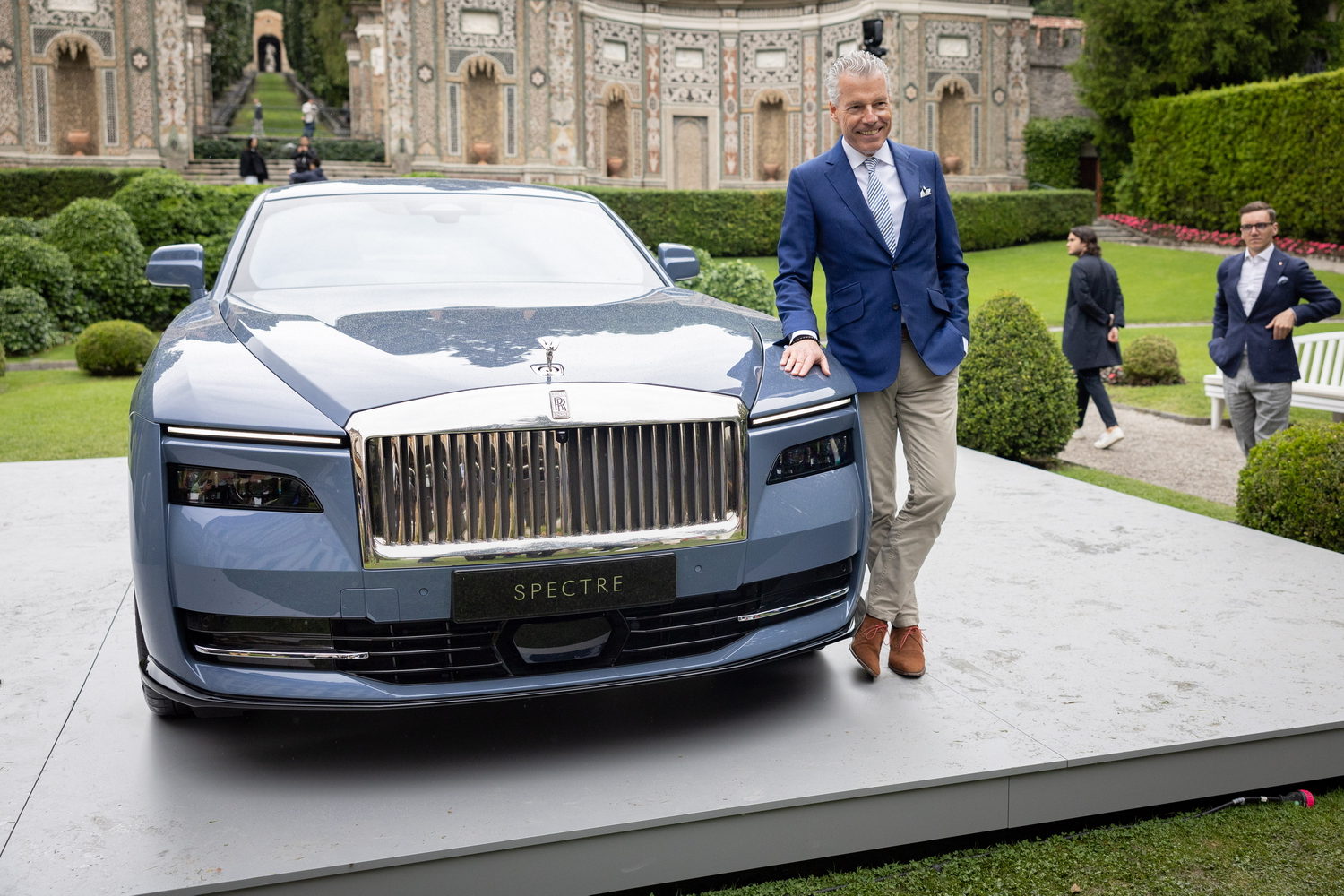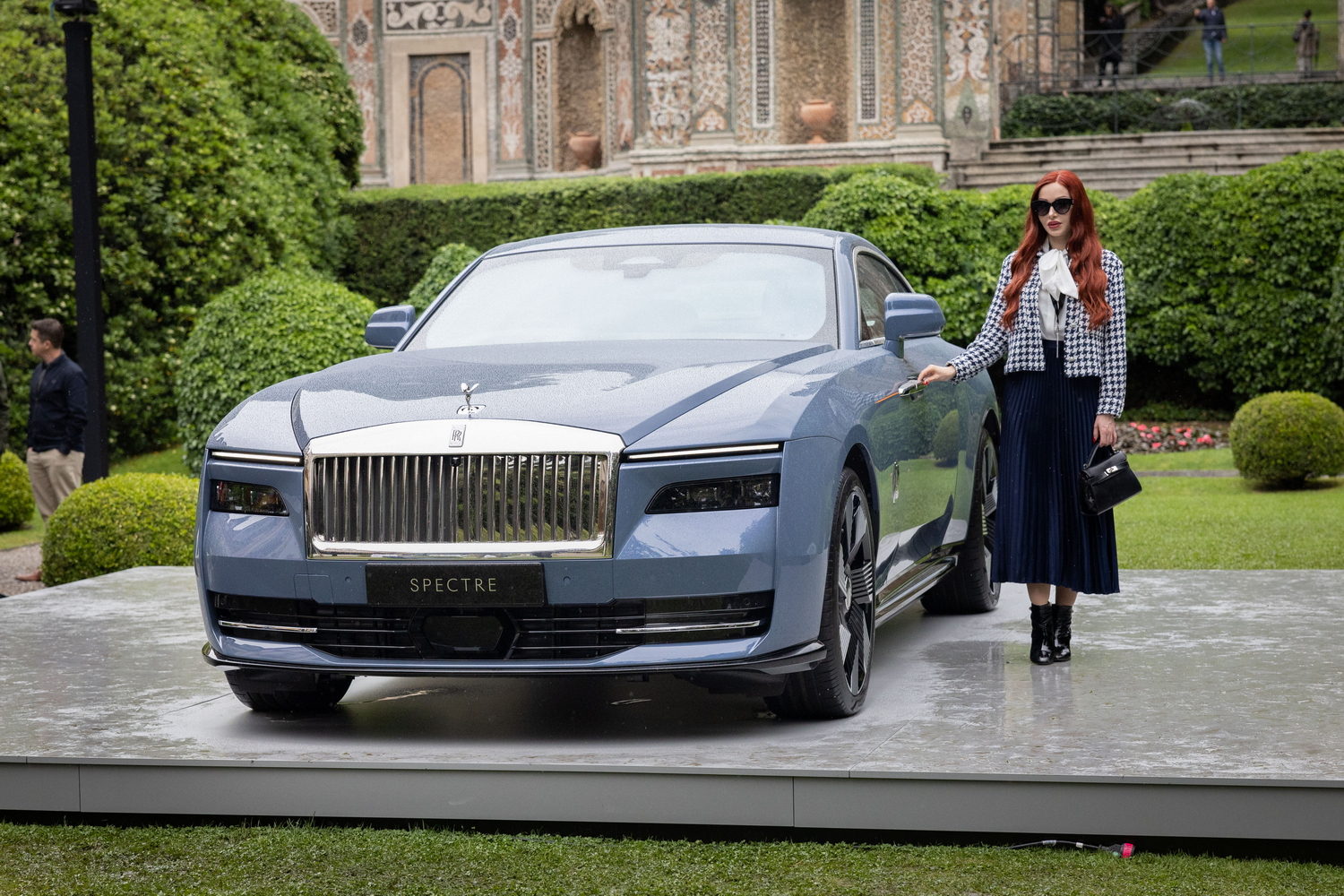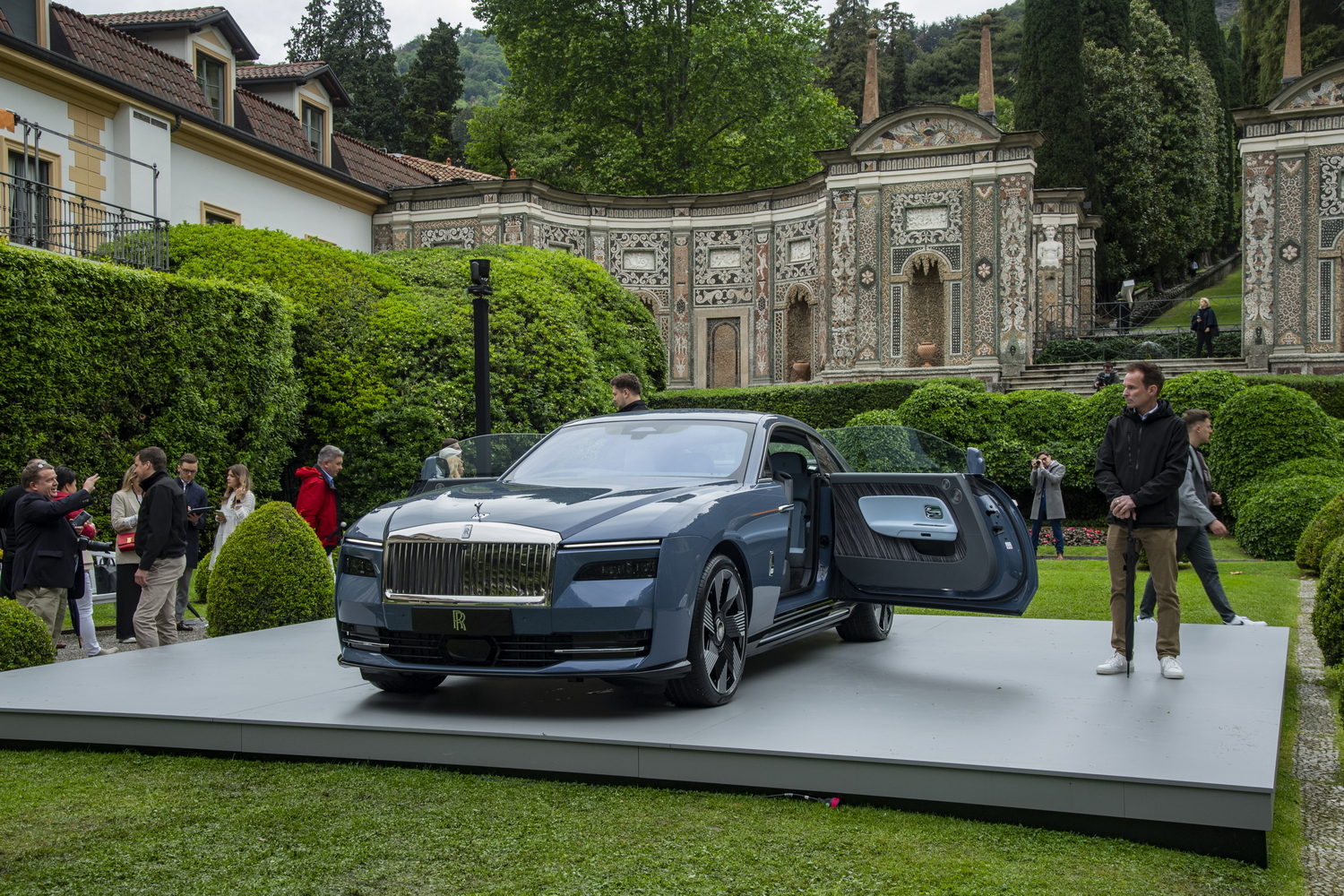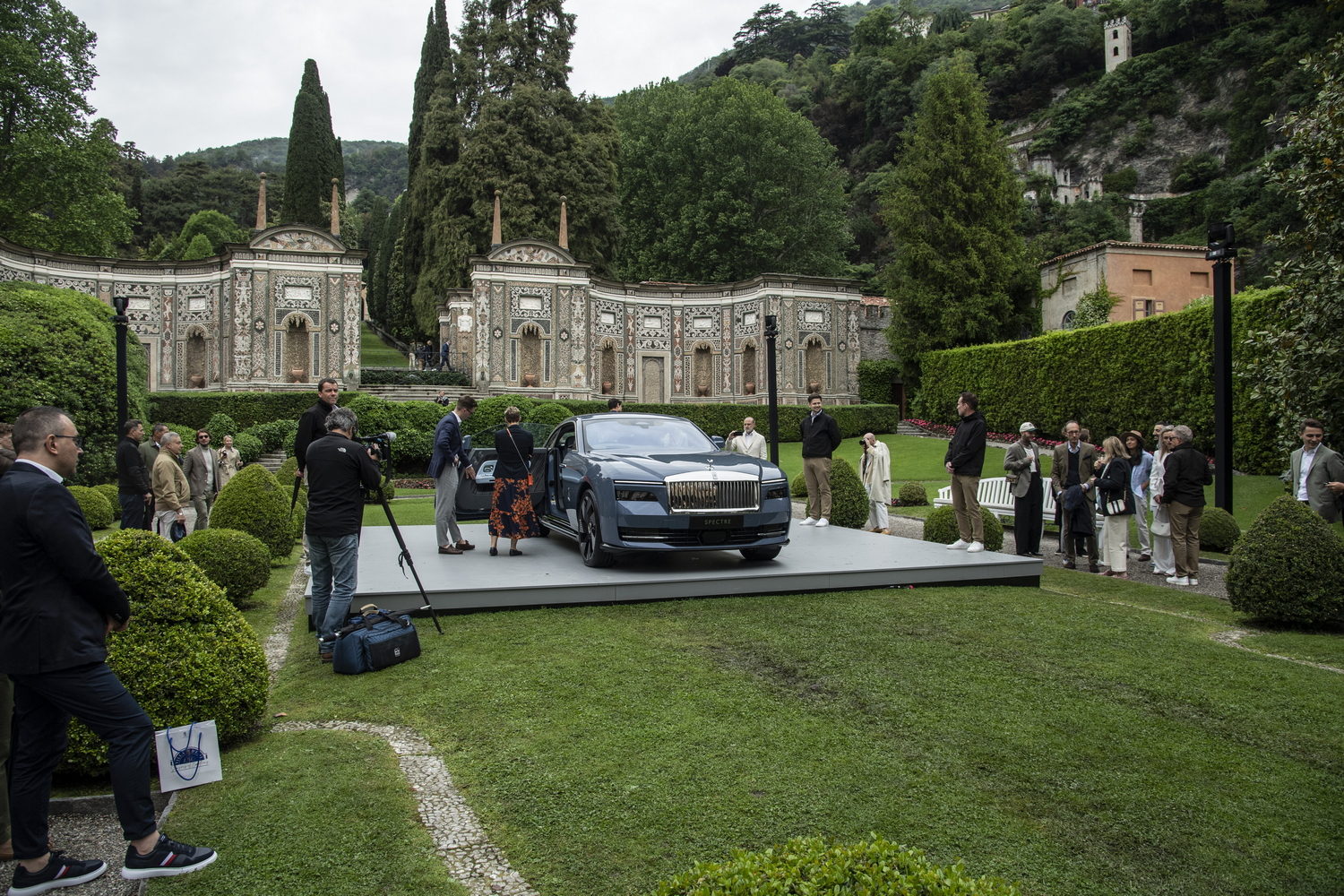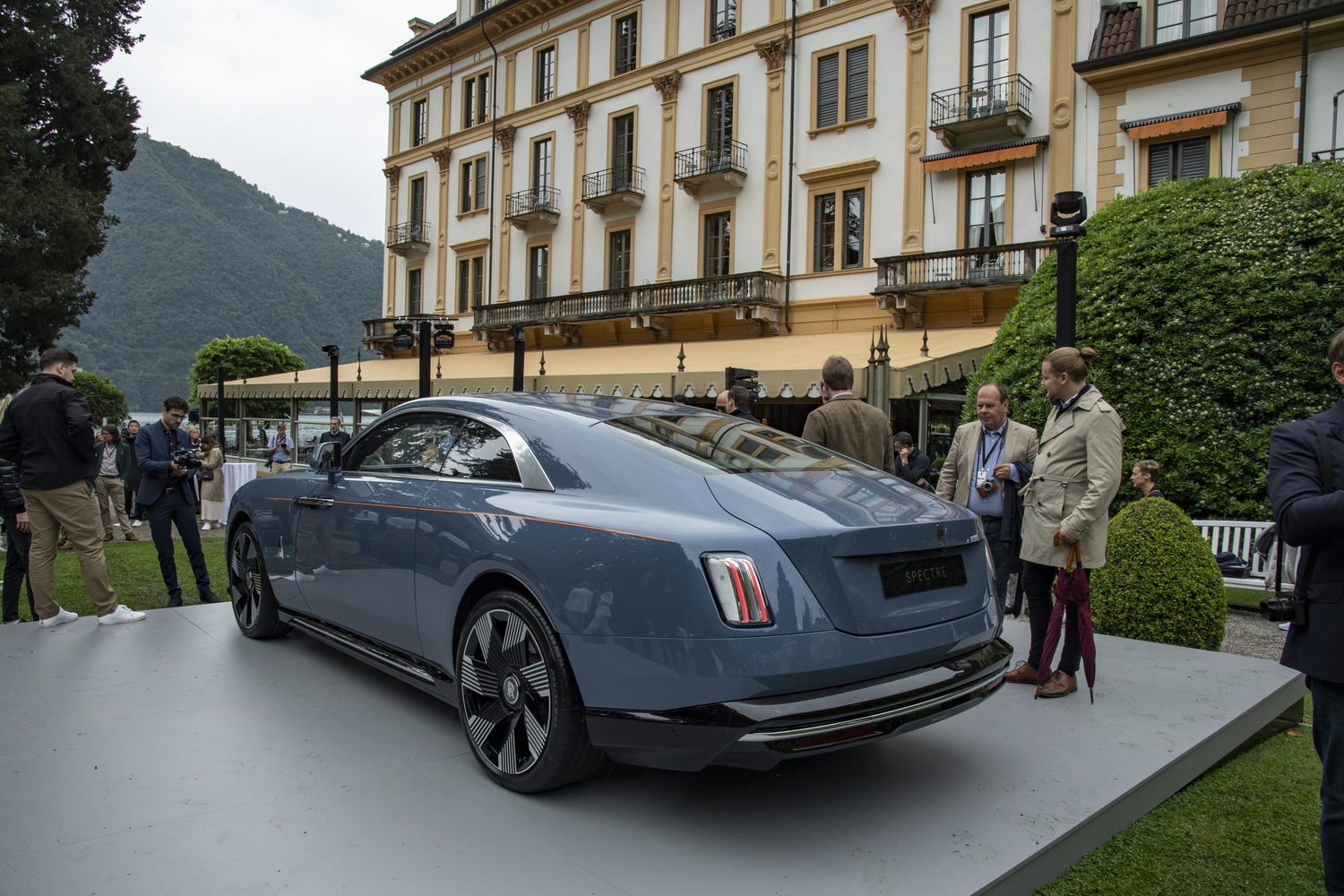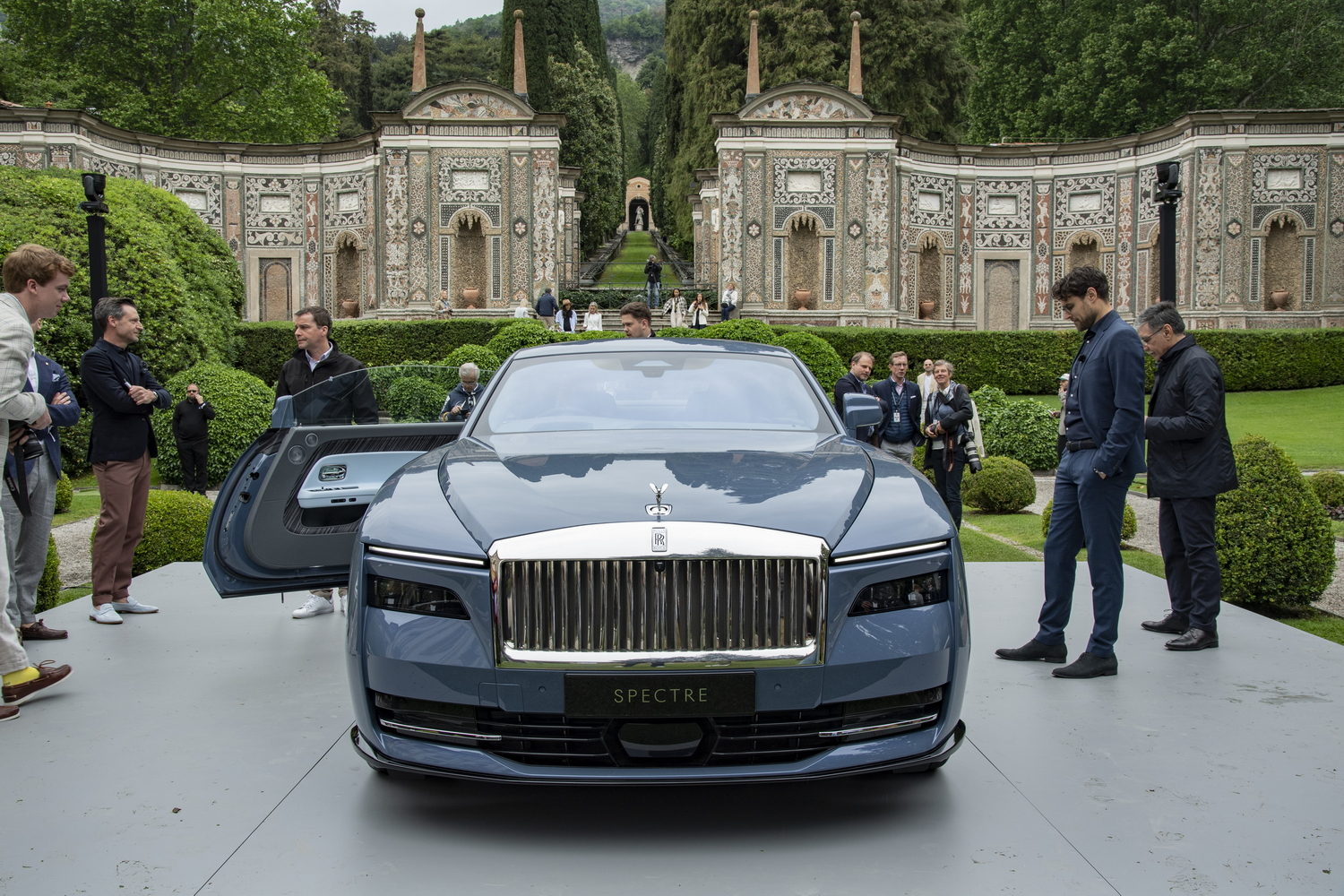"We call this a prophecy fulfilled," says Rhodri Good, project manager for the Rolls-Royce Spectre. "Charles Rolls, one of our founders, said in 1900 how well-suited electric power would be to a Rolls-Royce. He drove a very early electric car, a Columbia, and it blows my mind that that far back there was a competition between petrol and electric power to see which was better."
How much different might all of our lives have been had the world as a whole followed Charles Rolls' lead and gone with electric power (hugely popular in Edwardian times) rather than combustion engines? Motor racing might have been a bit less exciting, but city life (and air quality) would have benefited.
It probably didn't help that Rolls himself didn't survive long enough to wield much influence over the nascent motor industry. Rolls, a pioneering aviator, was killed in 1910, piloting an early Wright Flyer aircraft.
His partner, Henry Royce, of course carried on with their dually-eponymous firm, and we all know how that worked out. Now, a century-plus-change later, Rolls-Royce is embarking on a transformation from petrol power to electric, finally fulfilling Rolls' prediction.
The Spectre coupe will be the first fully-electric Rolls-Royce to go into production. I say 'production' because Rolls has dabbled with batteries before. Back in 2011, Rolls-Royce showed off the 102EX experimental car, based on the huge Phantom luxury saloon. With a fairly small 71kWh battery pack (which took eight hours to fully charge - no CCS charging back then...), the experimental Phantom could go for a claimed 200km. Not bad, all things considered.
The Spectre's specification is rather more up-to-date. The battery will have a useable capacity of at least 100kWh, giving the Spectre a range of more than 510km. Not massive, perhaps (100km less than you get from a Hyundai Ioniq 6 let's not forget) but probably sufficient for most Rolls-Royce owners, who are more likely to take the Gulfstream or the Learjet for longer journeys...
With two electric motors, the Spectre will have 585hp, but according to Good, the point is not to snap your neck with acceleration: "It's a true Rolls-Royce, not only in how it looks, but also in its character. We've got a lot of traits from the V12-engined cars in here. So, of course, the acceleration is good. It's in line with the V12 cars, but we haven't given in to the gimmicks that some people might associate with electric cars."
Whatever about the acceleration, there's no doubt that the easy torque and utter silence of an electric car entirely suits the Rolls-Royce brand image in a way that it doesn't say, a Ferrari or an Aston Martin. Those brands will have to work hard to convince buyers that a whooshing electric motor can be as thrilling as a shrieking V8 or V12.
"I can't comment on what other brands will do of course," Rolls-Royce's chief executive officer, Torsten Müller-Ötvös, told CompleteCar.ie. "For us, it's the ideal way to go when it comes to alternative propulsion because electric fits the brand. The silence, the torque, which is important for us to create that 'waftability' that comes with a Rolls-Royce. We are not defined by roaring exhausts and loud engines, actually the opposite."
Müller-Ötvös confirmed that by the end of 2030, Rolls-Royce would become a fully-electric brand, and that there will be electric versions of the Ghost, Phantom and Cullinan. These, though, will be all-new, bespoke-electric models, rather than refits of the current line-up, a route that Müller-Ötvös described to us as: "Easy, but a little bit boring..." While there will, obviously, be some sharing of electric components with BMW models, for the most part these cars will be fully and only Rolls-Royce models, using the same 'Architecture Of Luxury' aluminium platform that underpins the current range, and the Spectre.
You can see the beginning of those changes in the Spectre. For all the cries of 'wasteful luxury good' that will inevitably be raised, Rolls-Royce claims that the Spectre is relatively parsimonious. Certainly if its official 21.5kWh/100km electric consumption can be replicated in the real world, it will be fantastically frugal for such a big car. Much of that is down to how surprisingly easily the Spectre slips through the air - clearly, at Rolls' Hogwarts there is a good Defence Against The Dark Aerodynamic Arts teacher, as the Spectre has the same 0.25 drag coefficient as the egg-shaped Tesla Model X. The patrician grille, modelled on the Parthenon in Athens, is lower and wider than on any other Rolls-Royce model, and the chromed 'vanes' have been angled and brought closer together so that they direct air around the sides of the car, rather than barging through it.
Even the famed 'Spirit Of Ecstasy' silver lady mascot had bowed - well, crouched - to the needs of aerodynamics. It's the first major deviation since the original silver lady was designed by sculptor Charles Robinson Sykes in 1911. Perhaps 'crouching' is a touch undignified. Officially, Rolls-Royce says that the mascot now has a "lower, more dynamic stance" which will ever so fractionally improve the aerodynamics of the new Spectre. Around 18mm has been chopped from her height, while her flowing robes (no, they're not wings) have been reshaped for a touch less wind resistance. It may sound trivial, but every little literally helps in this regard
The battery lies under the enormous passenger compartment, and has been used as a gigantic noise insulation panel to help keep any unwanted tyre roar and road noise out of the inside. Underneath the skin, the Spectre gets a 'planar' air suspension system similar to that used by the Ghost saloon, which has automatically decoupling anti-roll bars to preserve that famed Rolls-Royce ride. It's also riding on massive 23-inch wheels, although Rolls-Royce claims that it's not the first such model to do so, just the first in about 100 years or so...
Inside, the dash architecture comes from the Ghost, as does the 'starlight' headlining which at night turns the roof into a gorgeous starry night effect, lit by thousands of tiny LEDs. There's a similar effect on the dashboard, where the Spectre name is surrounded by 5,500 star-like lights, a feature that Rolls says took more than 10,000 hours to design and perfect.
What the Spectre isn't, is light. In fact, it's within a hair's breadth of three tonnes at the kerb, which is exceptionally heavy especially for a two-door coupe (blame the 700kg battery pack). We asked Müller-Ötvös how this can be justified in a world that's trying to make cars more efficient, and his response was interesting: "Just to be crystal clear, we are not saying - bingo - this is our sustainability job done. This is a long-term journey. When it comes to sustainability, we also look at how we build our cars, the materials we use, the whole CO2 footprint."
"Combustion engines will more and more see tough regulations, including many that will say you are no longer allowed to register cars, or you are no longer allowed to go into city centres. And that would harm our brand in a massive way. Our clients live in the world's big cities, and they use our products to commute into and out of those cities. So, for us, going electric is not all about the ecological side, that was not the intention. It was to keep the Rolls-Royce brand relevant both for our existing clients, and for a whole new breed of client whom we simply haven't seen before."
Ballooning kerb weights are a major unintended issue of the move to electric vehicles - batteries are heavy things - so this is hardly solely a Rolls-Royce issue. Nonetheless, perhaps the arrival of a three-tonne coupe might give some legislators pause as to how the journey to electrification might be better handled.
Will an electric Rolls be more relevant to Irish buyers? Well, with a price tag of around £300,000 in the UK - which will likely mean at least €500,000 here - there are probably few potential buyers who would have been much worried about motor tax costs, fuel, or an SEAI grant. Rolls' dealer in Edinburgh, Grange Motors, generally looks after any Irish clients, and a Spectre experience for them is being lined up for later this year, ahead of the first deliveries in 2024.
Back in 1900, Charles Rolls said: "The electric car is perfectly noiseless and clean. There is no smell or vibration. They should become very useful when fixed charging stations can be arranged." More than 100 years on, he's still right, and still waiting.

